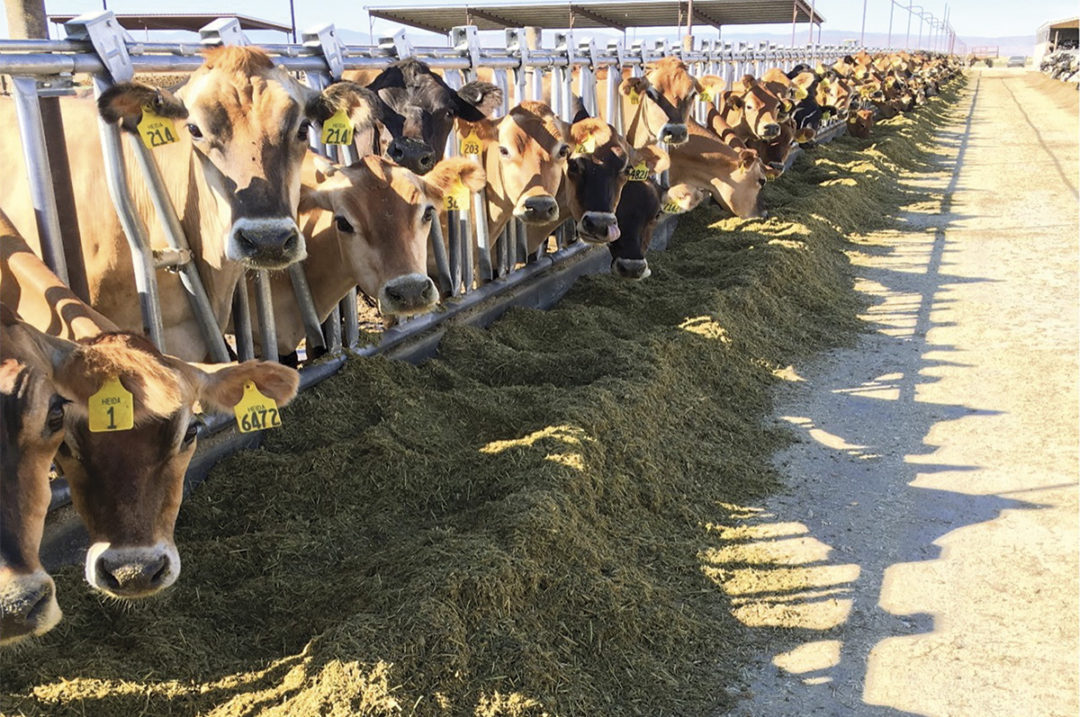Maximizing dairy efficiency is important when milk prices are high or low. Over the past nine to 12 months, our dairy operations have felt the margin and profitability crunch. This period has proven to be one of the most difficult financial times in my 25 years in the industry. The cost of borrowing money has doubled in the past three years! This, coupled with the increased cost of labor, utilities and goods used on the dairy, has made these times extremely challenging.
So what can you do to be more profitable in your business? What are the critical areas that can be focused on to increase cash flow? How do we do this without spending cash we don’t have or money we don’t want to borrow? What are things we can do to reduce our costs to breakeven?
Organizational leadership
Organizational leadership is paramount in difficult times for our dairy operations. Reducing the areas of nonconformance in our operations is the first opportunity to increase your profits without spending more money. Organizational leadership starts with great communication with our employees. Do your employees know what your expectations are? Do they know why they matter and how they fit in the organization?
Work with your team to develop key performance indicators (KPIs) in each of your departments. Design metrics that will influence your overall goals as an owner. Have your key employees involved in creating these numbers. Come up with strategies to engage and empower your employees. Hold all employees accountable to the standards and, most importantly, celebrate hitting targets. We push hard on our people and sometimes we forget to say thank you ... and mean it.
Total mixed ration (TMR) management
We have all heard about the three rations that are on a dairy: the one your nutritionist formulates, the one the feeder loads in the feed box and the one the cow eats. How do we have only one ration instead of the three options? Cows must have consistency to perform at their maximum genetic potential. Do you have a tracking system in place through your feed management software? Is the first feed delivery time for each pen consistent? Do we have the correct distribution of the feed throughout each pen? Does your feeder deliver the correct amount to each pen? Do you have loading deviations below 40 pounds or less than 2% for your feeders?
Look at your pushout and see how different it is from freshly delivered feed. Can the cows sort the TMR, or do they put their head down and eat? Work with your nutritionist and equipment service people on a monitoring and maintenance program. The price of nonconformance can be very high in this area of your dairy operation. Improper mixing of the TMR can lead to TMR sorting, which leads to off-feed issues, lowered butterfat percentage and lower feed efficiencies. Feed is your largest expense, but managing it can be inexpensive.
Forage quality
One of the most important things you can do to drive cow health, components, reproduction, peak milk and overall profitability starts with silage management. The bill is the same for your silage whether it was put in correctly or incorrectly, but the overall cost is drastic. Twenty-five to 30 years ago, 25% shrink on corn silage piles was not uncommon. Today, people have a goal of 10%, and I routinely measure 7% shrink. What does a 3% decrease in shrink mean to you? With a reduction in shrink comes an increase in quality feed with potential gains in feed efficiency and milk production. Do not turn off the pivot to make your corn finish. It stresses the plant and decreases digestible neutral detergent fiber (NDF), which in turn reduces milk potential. In the past, I wanted corn silage put in at 32%-38% dry matter (DM). Now, my goal is 30%-35% DM in order to limit the risk of stressing the plant and lowering digestibility.
Work closely with your nutritionist and custom-harvest companies. Start developing a plan now for triticale, haylage and corn silage harvests. Do not sacrifice your corn silage crop for your triticale. Make plans to harvest the first weather window you see, the end of April or the beginning of May, so you can get corn planted as soon as possible. The rule of thumb on silages is to err on the wet side for corn silage and the dry side for triticale and haylage.
Manage your harvest. Using EZ Weights or a similar program works well for inventory management. It will tell the scale person when to get light weights and when to pull feed samples. Send these samples to a third-party lab for an absolute DM. I like DM samples pulled every eight to 10 trucks, depending on 10-wheelers or semis. Koester or other systems have too large of a deviation in DM accuracy. Make sure samples and light weights are being taken. You need to be there with your nutritionist to monitor how your feed looks. Chop length, kernel processing and packing density are critical to a successful harvest season. Hold people accountable for your dairy’s profitability. This is one of the most important things you can control.
Reproduction
We all know that if a cow does not get pregnant on a dairy, she will not be there for long. Days in milk drives the profitability of the herd. A cow early in lactation has the highest feed efficiency. She has lower DM intake and higher milk production. Every 10 days you reduce days in milk on a herd will lead to 2-2.5 more pounds of milk in a Holstein herd. You are just milking a fresher herd of cows, which improves profitability.
Work closely with your A.I. company and your veterinarian to have an executable reproduction program. Have them help you with a good monitoring program. This is a long-term investment that will pay huge dividends. Conception rates matter, but it’s not the whole story. Heat detection is also just as critical. Those together help us determine the pregnancy rate. Are you double-checking conception rates for technicians and sires? Sometimes we can get low-conception bulls. Monitor these areas after every vet check. Do weekly pregnancy checks, as the goal is to find open cows as quickly as possible. I have seen a trend of moving our voluntary waiting period (VWP) to 70-plus days in milk with great results and still getting more cows pregnant by 150 days in milk. Make sure your reproductive program is simple and achievable for your reproduction crew. When managed well, I now see 35%-40% pregnancy rates on Holstein dairies.
The above are a few areas that, with focused management and your leadership, can drive your operation’s profitability. Most of these areas take communication and dedication but not additional financial resources. When you focus your efforts to improve in these four categories, it will equal a rise in profitability. How can we cash flow on $15-$16 milk? Organizational leadership, TMR management, forage quality and reproduction are the easiest ways to try to make that possible. Stay diligent in your pursuit to get better and remember that "the only easy day was yesterday" (89th Seal Team)!



.jpg?t=1687979285&width=640)

.jpg?height=auto&t=1713304395&width=285)


